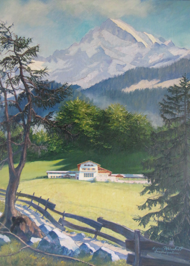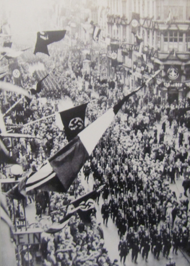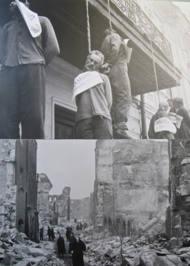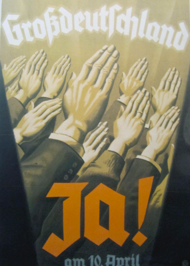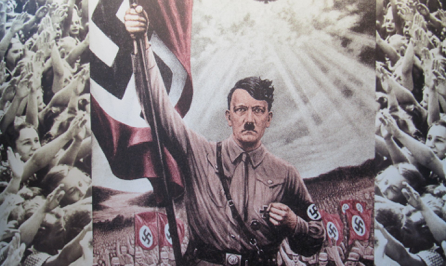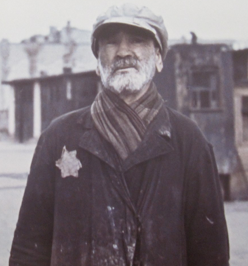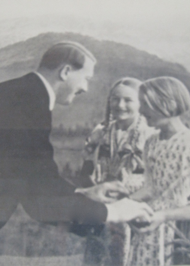DOCUMENTATION CENTER
obersalzberg, berchtesgadener land
on the border of austria
bavaria, Germany
europe
november 3, 2011


DOCUMENTATION CENTER
obersalzberg, berchtesgadener land
on the border of austria
bavaria, Germany
europe
november 3, 2011


The Documentation Center, also known as The Obersalzberg Documentation Center, was opened in October, 1999. It is a permanent exhibition of the Institute of Contemporary History Munich-Berlin, commissioned by the Free State of Bavaria. The building in which this exhibition is presented is the rebuilt Gästehaus Hoher Göll, a building in a former health resort that was requisitioned to be part of the Führersperrgebiet or the “Fuhrer’s security zone” that was off-limits to the public beginning in 1930’s. The building stands on the grounds of Hitler’s Berghof and Obersalzberg compound of 80 or so buildings, used as a second seat of power alongside Berlin, where important political decisions including policies on peace, war, and the Holocaust, were proposed and set into action. Political propaganda under the direction of Goebbels, capitalized on the expansive panorama and grandiose mountain compound to portray Hitler as a politician close to the people, a friend of children and nature, a good neighbor, a great statesman, and a visionary. On April 25, 1945, British and American long-range bombers destroyed most of the buildings. Only a few buildings remained, including the Eagle’s Nest and the bunker complex built between 1943 and 1945. Occupied by American forces beginning on May 4, 1945, parts of the Obersalzberg were used as a recreational area for the US Army, accessible only to members of the American Military beginning in 1947. Fulfilling a condition for the return of Obersalzberg to German control, the ruins of the Berghof, the houses of Goering and Bormann and the 55 barracks were blown up and bulldozed in 1952. Since tourists are attracted to this area because of the extraordinary site of Hitler’s famed Eagle’s Nest, the center offers an opportunity to tell the story in situ of the horrors of World War II and the Nazi regime, an educational effort that is important to the fabric of German culture today. The exhibition displays 950 photographs, documents, posters, film and sound recordings, some of which are made available to the public for the first time. A chronologically organized exhibition recounts the entire history of Hitler’s rise in politics within the German government. The exhibition begins with a shocking image of Hitler as the “avenging angel ... a militaristic-religious figure destined to save Germany. This image, not unlike a triptych altarpiece, is bordered by photographs of concentration camp victims and political prisoners hanged in a public square. Photos and biographies of the major participants in Hitler’s circle, including Adolf Hitler, Heinrich Himmler, Joseph Goebbels, Hermann Göring, Martin Bormann, and Albert Speer, introduce the participants in the story that unfolds with vivid detail. Henry and I used an audio guide in English, while most labels were written in German, aimed at informing and educating a native German audience. Vitrines within the multi-level exhibition space were filled with such items as uniforms, an SS dagger and ring, photographs of training sessions and members of the SS troops, an elite special security force chosen to protect Hitler. The exhibition at the Documentation Center is dense with material, the most fascinating being some of the unpublished photographs of Hitler and Eva Braun from the Staatsbibliothek Foto Archive in Munich. One of these photos depicts the “love pair” dining together, and several depict Eva partying with party officials at Obersalzberg. The exhibition is thorough. It leaves no doubt about what happened and how the political situation in Germany deteriorated during the Weimar Republic, and the role Hitler’s retreat at Obersalzberg played with the manifestations of his dictatorship. One of the goals of the Documentation Center, beyond informing the general pubic of the complex historical events that occurred during the National Socialist (Nazi) era, is to counter right wing extremism. With a convincing amount of material, the story of Hitler and his ambitions for a Third Reich reveal how Germany and its citizens followed the lead of a madman and megalomaniac into war and to a devastating bitter end!
A Memorable Post-Script: A conversation Henry and I had with a German we met in Leipzig has remained poignant. When he learned that we are Americans, he expressed his gratitude that America had saved Germany from itself in WW II.
PHOTOS: Top Three: 1. A German war poster promoting WW II. 2. Hitler addressing a crowd in Berlin. 3. Nazi soldiers on parade. Middle Two: 1. A painting of Wachenfeld House, the house purchased by Hitler in the summer of 1933. His huge compound of Berghof grew from these humble beginnings into a retreat and a command center during his dictatorship in the Nazi Era. 2. One of Hitler’s countless victims: a Jewish prisoner/laborer at one of Hitler’s concentration camps. 3. A public relations propaganda photograph c. 1930‘s portraying Hitler as a friend to children. Bottom Two: 1. The opening visual statement in the Documention Center: The illusion as portrayed in a 1930’s poster of Hitler shown as an avenging angel destined to save Germany. 2. The reality of the Nazi regime under the dictatorship of Hitler: political dissenters hanging dead in a public square superimposed atop a photo of the devastation of war, a German city bombed during WW II.

Documenting the Nazi Era

